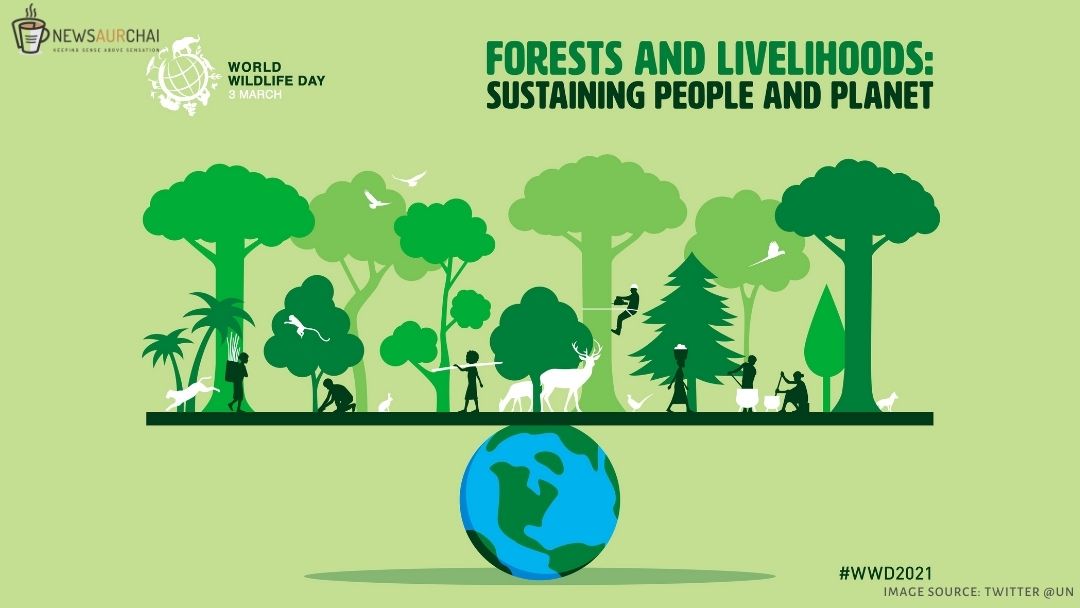
World Wildlife Day is an annual celebration recognizing and raising awareness of flora and fauna worldwide on March 03. It is also known as ‘Wildlife Day’ or by its abbreviation ‘WWD’. When there are ‘special movements and days’ set apart to advocate for human rights, we forget the plight of the beautiful creation surrounding us. Indeed, every living being co-exists because we need each other. Not just the 03rd of March, but each day should be a time for us to nurture and care for the plants and animals, instead of being selfish.
Less than 24h to go until #WorldWildlifeDay!
Tune in tomorrow at 8h (EST)/14h (CET) to watch our celebration of the experiences of Indigenous and local communities who contribute to the conservation of forests and wildlife: https://t.co/EBI3lK7AFc #WWD2021 #ForestsPeoplePlanet pic.twitter.com/LhlRjnYf6z
— World Wildlife Day (@WildlifeDay) March 2, 2021
Themes over the years
For centuries, forests have provided livelihoods for hundreds of millions of people, especially within indigenous communities.
Forests, wildlife & biodiversity need protection.
Help spread the word on Wednesday's #WorldWildlifeDay. https://t.co/LuyV8dWL1T pic.twitter.com/YFfChLLY7r
— United Nations (@UN) March 2, 2021
The theme for 2021’s WWD is “Forests and Livelihoods : Sustaining People and Planet”. This year’s theme, as stated on wildlifeday.org, is expressed “As a way to highlight the central role of forests, forest species and ecosystem services in sustaining the livelihoods of millions of people globally, and particularly of Indigenous and local communities with historic ties to forested and forest-adjacent areas.”
The previous themes of this day are also to be noted, so that one may observe the need to preserve wildlife in whatever manner possible.
Previous Years: Annual Theme
2015: “It’s time to get serious about wildlife crime.”
2016: “The future of wildlife is in our hands” (Sub-theme: “The future of elephants is in our hands.”
2017: “Listen to the young voices.”
2018: “Big cats – predators under threat.”
2019: “Life below water: for people and planet.”
2020: “Sustaining all life on earth.”
How did this Special Day come into the picture?
On the 20th of December 2013, the United Nations General Assembly (UNGA) proclaimed the 03rd of March as UN World Wildlife Day. In its resolution, the UNGA emphasized the importance of our planet’s plants and animals and even claimed the intrinsic value and carious wildlife contributions.
Furthermore, the UN announced that this day would be committed to keeping the community aware and up-to-date about the dynamic world of the plant and animal kingdoms, which are frequently under human threats, thus pushing them even to the point of extinction. The UNGA resolution appointed the CITES Secretariat as the facilitator for the special day to be acknowledged worldwide. According to the UN, “between 200 and 350 million people live within or adjacent to forested areas around the world, relying on the various ecosystem services provided by forest and forest species for their livelihoods and to cover their most basic needs, including food, shelter, energy and medicines.”
The Scene in India
The Prime Minister, Mr Narendra Modi, tweeted the above recognizing the people who are putting in their time and efforts to protect the precious wildlife and urging the citizens to take up their roles in the race to protect the nations’ Plantae and Animalia.
On #WorldWildlifeDay, I salute all those working towards wildlife protection. Be it lions, tigers and leopards, India is seeing a steady rise in the population of various animals. We should do everything possible to ensure protection of our forests and safe habitats for animals.
— Narendra Modi (@narendramodi) March 3, 2021
The Minister of Environment, Forest and Climate Change, Mr Prakash Javadekar, fueled the nation’s hope by tweeting that the Cheetah, India’s big cat, went extinct in 1952, shall soon become a reality with the government’s help.
India has thriving wildlife & biodiversity.
70% of Global Tiger population .70 % of Asiatic Lions.
60% of Leopard population.
The @narendramodi govt. is working on reintroduction of Cheetah,which went extinct in 1952.
…this Big Cat will be a reality soon.#WorldWildlifeDay pic.twitter.com/uhQFxI0yT4
— Prakash Javadekar (@PrakashJavdekar) March 3, 2021
Currently, the movement to conserve forests and wildlife in India is substantial.
Plants
- Legislative measures have been passed that has led to the adoption of areas with vibrant floral diversity as biosphere reserves;
- Steps are being taken not to leave forests in private hands;
- The Ministry of Environment, Forest and Climate Change are in plans to clear those projects that are likely to cause ecological damage.
Animals
- Species like the elephant, rhinoceros and tiger have been declared ‘endangered’ and various others are considered either vulnerable or at risk;
- Specific legislative measures have been passed that declared the protection of the animals.
What should we do?
- Get involved and see how you can care for these precious lives, starting from your home. Growing plants, feeding and not hurting stray animals are beginner steps that will yield great results as time progresses;
- Follow websites of famous national parks and biosphere reserves to know more about their functions and how you can be involved in protecting them. A few examples would be
After inquiring with the officials concerned and strictly keeping in mind the government’s protocol, these parks can be visited.
4. Educate your family and friends about the importance of caring for wildlife;
5. Wisely use social media to spread awareness about the kind act.





